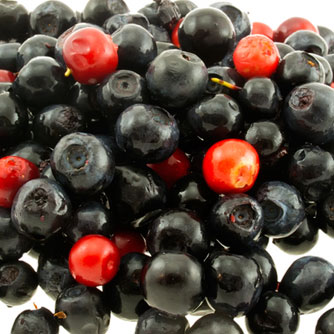White wheat bread contains starches that can induce post-consumption spikes in glucose and insulin responses. For rye bread, the glucose response is similar, whereas the insulin response is lower. A number of previous studies suggest that polyphenol-rich berries may reduce digestion and absorption of starch and thereby suppress postprandial glycemia. Riitta Torronen, from the University of Eastern Finland (Finland), and colleagues enrolled a 13 to 20 healthy women to participate in three randomized, controlled, crossover, two-hour long meal studies. Subjects consumed white wheat or rye bread, both equal to 50 g available starch, with 150 g whole-berry purée or the same amount of bread without berries as reference. In study 1, white bread was served with strawberries, bilberries, or lingonberries and in study 2 with raspberries, cloudberries, or chokeberries. In study 3, white wheat or rye bread was served with a mixture of berries consisting of equal amounts of strawberries, bilberries, cranberries, and blackcurrants. The researchers observed that strawberries, bilberries, lingonberries, and chokeberries consumed with white wheat bread, and the berry mixture consumed with white wheat or rye bread, significantly reduced the postprandial insulin response. Only strawberries (36%) and the berry mixture (with white bread, 38%; with rye bread, 19%) significantly improved the glycemic profile of the breads. Submitting that: “These results suggest than when [white wheat bread] is consumed with berries, less insulin is needed for maintenance of normal or slightly improved postprandial glucose metabolism,” the study authors report that: “The lower insulin response to [rye bread] compared with [white wheat bread] can also be further reduced by berries.”
Berries Counteract Starchy Foods
Riitta Torronen, Marjukka Kolehmainen, Essi Sarkkinen, Kaisa Poutanen, Hannu Mykkanen, Leo Niskanen. “Berries Reduce Postprandial Insulin Responses to Wheat and Rye Breads in Healthy Women.” J. Nutr. April 2013; 143: 430-436.
RELATED ARTICLES




